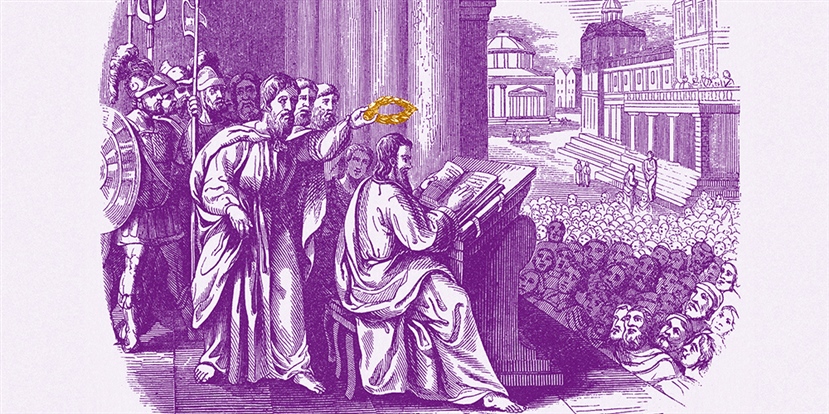By Heather Nice
If the goal of history education is teaching our students to embrace disciplinary practice, a paradigm shift in how we teach writing in the history classroom is necessary. Although historians understand their role in the interpretation of the past, many of our students do not. To that end, I want to share a few tips to help students learn to write historically.
1. Begin your argument with a claim.
Whether you call it a claim or a thesis statement, teach students to take a clear stance in response to the question being asked. Make it clear, however, that they shouldn’t develop their claim until they’ve reviewed all provided sources and collected evidence. While students might be tempted to cherry-pick the sources for quotes that support an argument they’ve already decided to make, their claim should come directly from the evidence gathered from the sources.
2. Own who you are and why you chose this argument.
While this may seem counterintuitive to the impersonal and removed voice we’ve taught students to use in the past, historians are taught to be clear about who they are, why they chose their research question, and how they have approached their argument. For students, this doesn’t have to be a part of the formal essay. Instead, consider asking them to write a few sentences after their conclusion to describe how they approached the argument and why they chose the evidence they did. This simple act encourages them to reflect on their choices and can help them see where they may have leaned into confirmation bias or past practice.
3. Provide quality evidence that supports or confronts this claim.
In writing to respond to a question about the past, the student as historian must select the facts that are relevant to the argument they make. Quality evidence is clear, relevant, and compelling—it not only supports the student’s argument, it furthers it. Other historical thinking skills, such as sourcing, contextualization, and corroboration, can help students sift through and identify the best evidence to build their argument. These skills will also help them deal with, rather than discard, evidence that disagrees with their claim.
4. Synthesizing evidence is more important than inserting a quote.
Document-based questions (DBQs) have, unfortunately and unintentionally, taught many of our students that inserting a quote qualifies as evidence. While a well-placed quote can certainly further their argument, approaching evidence as only a series of quotations means they’re missing a key point of disciplinary practice. Historians, rather than letting individual sources move their arguments forward, synthesize evidence across a variety of sources to identify themes and key ideas. When students use quotes from singular sources to build an argument, they miss the integral role they should play in synthesizing the evidence they encounter.
5. Where there are gaps in evidence, infer what might have happened. Use historical imagination, bound by evidence, and hedge your language.
History, or the story of the past, is interpretive and subject to change. The past, or those events that happened before now, cannot change. We need to teach students three things: The historical record is incomplete; history is interpretive; and, as we ask new questions, new answers come to light. To help them reflect this understanding in their writing, students should be taught that they can make inferences where there are gaps in the evidence, but that those inferences must be bound by evidence and context-based historical imagination. Further, they should use hedging language, or clear indicators of potential uncertainty (“may,” “could possibly,” “might,” “it is unclear; however, the evidence seems to point to,” for example), to help the reader understand that they are making an inference.
Remember, the goal here isn’t to produce the next Lynn Hunt, Dipesh Chakrabarty, Edna Greene Medford, or Simon Schama. Your job isn’t to create professional historians (although how cool would it be if you did?). Instead, your mission is to plant the seeds for historical thinking and cultivate those skills over time. When students are trained in historical thinking, they understand the importance of thinking critically about the arguments they present. They seek quality evidence in the arguments they make as well as in the arguments made by others. They don’t make claims or hold positions that can’t be supported by evidence and historical context, and they learn to own their positionality in the claims they make. Given this, I’d argue that our ultimate goal as history teachers is to cultivate informed citizens who approach all information, including what they create, with both curiosity and skepticism.
What kind of writing strategies do you use in your classroom? Share your thoughts with others in the OER Project Teacher Community. In addition, check out the activities in the WHP and BHP writing progression or give your students extra DBQ practice with Project Score prompts, warm-up activities, and revision activities.
About the author: Heather Nice has extensive experience in social studies instruction, curriculum development and assessment, instructional design, and the use of technology in learning environments. Her academic and professional interests lie in the intersections between archives, education, and history as she seeks to understand best practices for the instructional use of archival collections and disciplinary practice in the K–12 classroom.
Cover image: Herodotus (c. 484–425 BC, ancient Greek historian) reads his story and is crowned with the laurel wreath. He was the first historian known to collect his materials systematically, test their accuracy to a certain extent, and arrange them in a well-constructed and vivid narrative. Woodcut engraving, published in 1864. © DigitalVision Vectors / Getty Images.
 For full access to all OER Project resources AND our amazing teacher community,
For full access to all OER Project resources AND our amazing teacher community, 
Top Comments
-

John Vidoli
-
Cancel
-
Up
+1
Down
-
-
Reply
-
More
-
Cancel
Comment-

John Vidoli
-
Cancel
-
Up
+1
Down
-
-
Reply
-
More
-
Cancel
Children